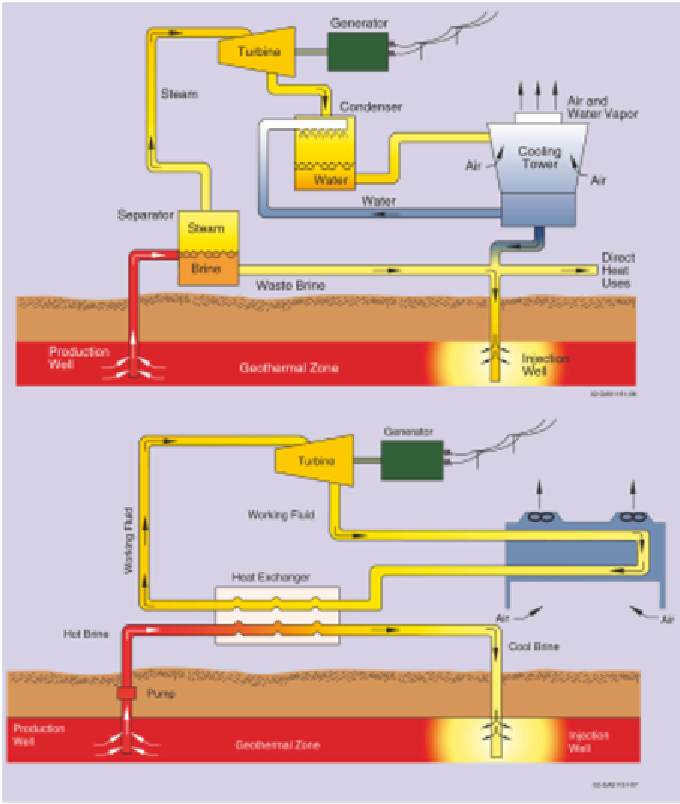Geoscience Reference
In-Depth Information
(a)
(b)
FIGURE 3.6
(a) The fluids delivered to the surface by the production wells in a flash steam power cycle
are passed through a flash vessel or separator; the separated steam that flows out of the top is directed
into a power plant where it is used to spin a steam turbine connected to a generator that produces an
electrical output. The spent steam travels through a condenser, and the condensate is then pumped to the
cooling tower, where the liquids are cooled before some of the fluids are pumped back inside the condenser
and some are combined with the water drained from the bottom of the separator and sent to the injection
wells. (b) The produced fluids for binary cycle power plants are first passed through a heat exchanger to
heat a secondary liquid, usually an organic fluid such as isopentane, which vaporizes (boils) at a lower
temperature than does water. That vaporized secondary fluid is then used to spin a turbine generator to
make electricity. Similarly, that vapor is then condensed and returned directly to the heat exchanger to be
reheated, revaporized, and recycled without any fluid loss. The produced geothermal water that has passed
through the heat exchanger is then delivered to the injection wells. SOURCE: Idaho National Laboratory.


Search WWH ::

Custom Search